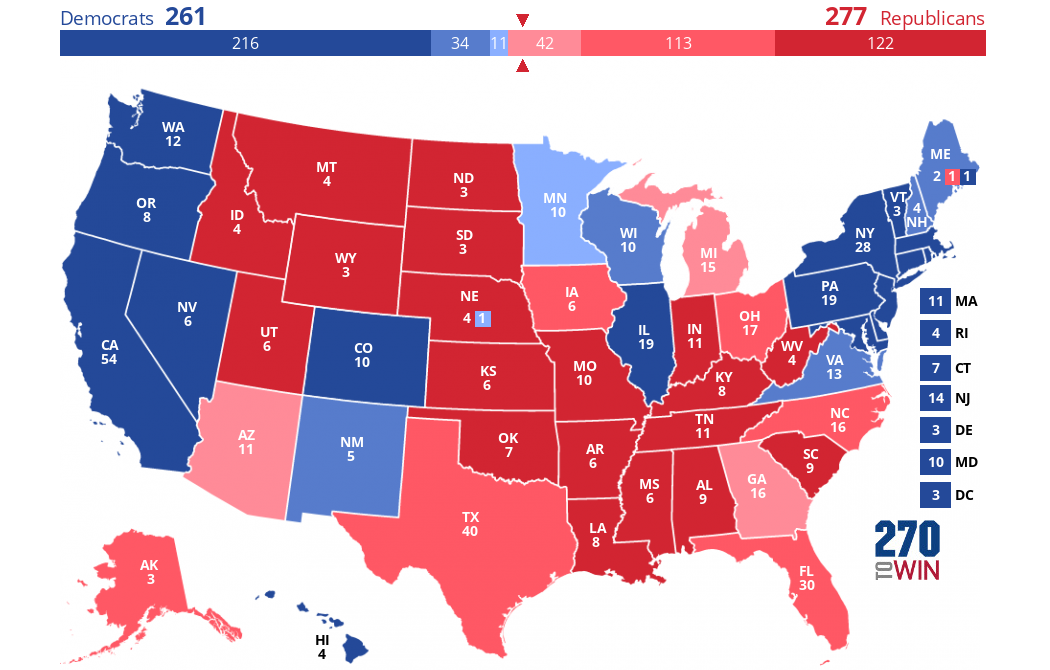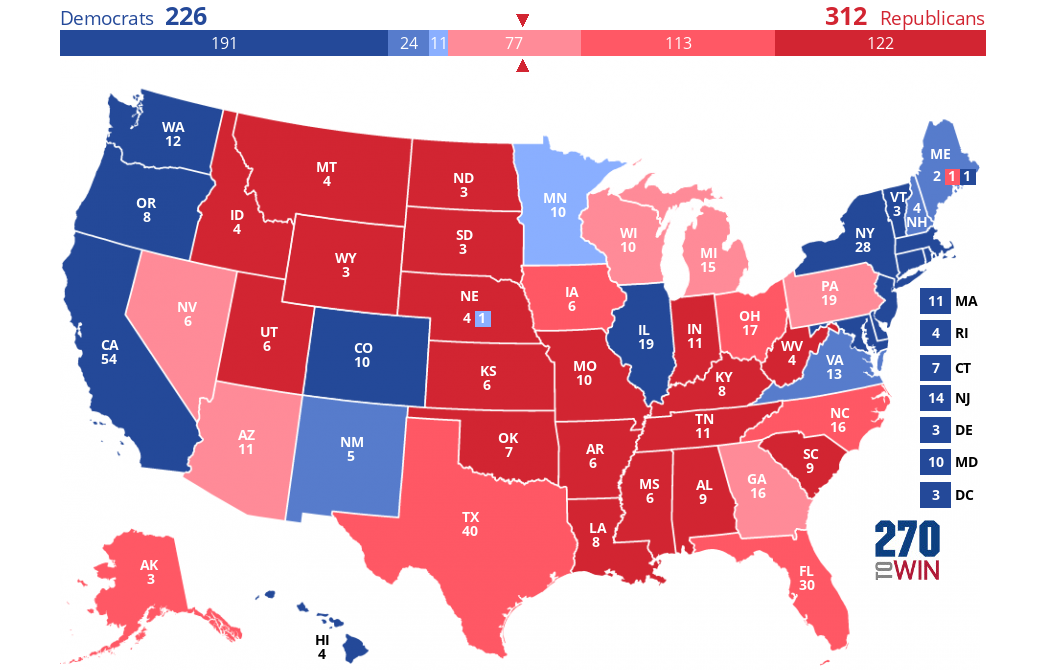We support our Publishers and Content Creators. You can view this story on their website by CLICKING HERE.
In 2016, few saw the collapse of the Democrats’ “blue wall” in the Midwest. In 2020, they hailed its return in Joe Biden’s narrow win as a sign that Hillary Clinton’s failure had been an anomaly and not a political realignment.
Advertisement
This cycle, not only has the worry returned, now everyone can see it coming. Even Democrats, according to NBC News:
Recent discussions have centered on the possibility of an anomaly happening this year with just part of the blue wall breaking its way. The conversations have focused on whether Michigan or Wisconsin “fall” to former President Donald Trump while the two other states go blue, according to three sources with knowledge of the campaign’s strategy.
Losing Wisconsin or Michigan would mean that even if Harris secures Pennsylvania — where both Harris and Trump have spent the most time and resources — she would not reach the necessary 270 electoral votes to win the White House without winning another battleground state or possibly two.
“There has been a thought that maybe Michigan or Wisconsin will fall off,” said a senior Harris campaign official, who stressed that the bigger concern is over Michigan. Two other people with knowledge of campaign strategy — who, like others in this article, were granted anonymity to speak candidly — also underscored deep concern about Michigan. Those people still believe that all the states are close and that there are alternative routes to victory.
Advertisement
Even this soft-peddles the reality at the moment. In 2020, Joe Biden won all three blue-wall states along with Georgia and Arizona, flipping them against Trump to win the Electoral College 306/232. Thanks to shifts from the 2020 census reapportionment, that narrows up this year to 303/235. A flip of almost any state along with Pennsylvania would come close to handing the election to Trump.
At the moment, however, Trump leads in every battleground state in RCP’s aggregation. Georgia, with its 16 electors, is almost certainly lost; Harris has only led in two polls there since Labor Day and Trump’s aggregate lead is +2.5. That alone is nearly half of the electors Trump needs to hit 270 for the election. Trump leads in Michigan by 1.2 points, and worse yet, the trendlines shifted away from Harris over the last month. Quinnipiac — not exactly a GOP-leaning pollster — went from Harris +5 in mid-September to Trump +4 two weeks ago.
Georgia, ironically, was the one battleground state that pollsters got right four years ago; Biden led in RCP’s polling aggregate by +0.8 and won by +0.3. Bear in mind that pollsters missed Trump support by a pretty wide margin in all of the other battlegrounds, including Michigan, in both 2016 and 2020. On this date in 2016, the RCP aggregation showed Hillary Clinton up eleven points before losing the state two weeks later by 0.3 points. Joe Biden was up in Michigan by 7.8 points, and ended up winning it by 2.8 points. Have pollsters improved their performances in these states? Perhaps, but I’d bet that even the good numbers for Trump in Michigan may understate his real standing on Election Day, especially against a candidate who seems to be running out of gas everywhere except the deep-blue states.
Advertisement
So right now, let’s assume Georgia and Michigan are gone. That makes the Electoral College count 272-266 Harris. But look at Arizona, where Trump’s aggregate lead is 1.8 points, including a five-point lead in the NYT/Siena poll last week. Pollsters had a somewhat smaller miss in this state in the last two cycles, but the miss was almost three points in Biden’s favor in 2020 and closer to five with Clinton. If we move Arizona’s electors to Trump, we get this EC map — even without Pennsylvania or Wisconsin:
But just to be clear, this trend holds up in every battleground state other than Georgia:
- PA: Trump +0.8, 2020 pollster miss -3.7
- WI: Trump +0.4, 2020 pollster miss -3.9
- NC: Trump +0.5, 2020 pollster miss -3.1
- NV: Trump +0.7, 2020 pollster miss -2.8
If these hold up, the EC map looks like this instead:
If this comes to pass, don’t be surprised to see different results in Virginia, New Hampshire, and maybe even New Mexico. Those states haven’t gotten the same level of attention that the battleground states have, but this level of shift from 2020 suggests that the impact could be greater than just in those contested states.
That is, of course, what Democrats really fear. Any crack in the ‘blue wall’ likely means that a realignment-type outcome will be the result, with implications all the way down the ballot. The fact that Democrats are talking about losing Michigan and possibly Wisconsin means they’re really worried about this last map coming to pass. And they should be.
Advertisement

 Conservative
Conservative  Search
Search Trending
Trending Current News
Current News 







